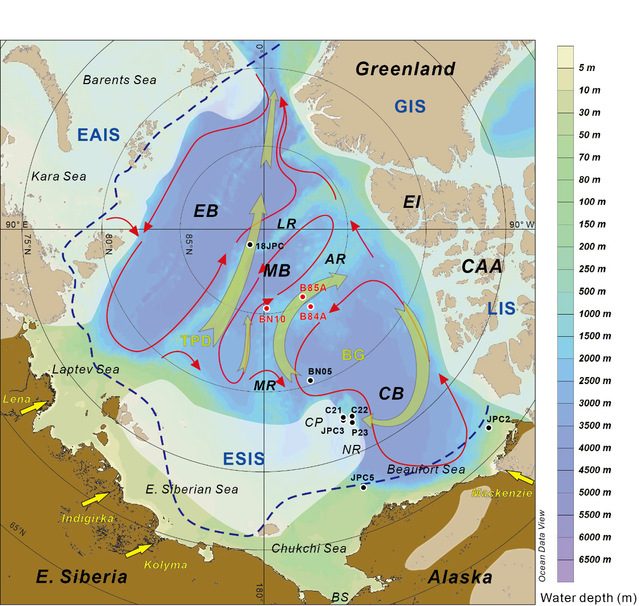Rujian Wang a, Leonid Polyak b, Wenshen Xiao a, Li Wu c, Wenbao Li d
a State Key Laboratory of Marine Geology, Tongji University, Shanghai 200092, China
b Byrd Polar and Climate Research Center, The Ohio State University, Columbus, OH 43210, USA
c College of Ocean and Meteorology, Guangdong Ocean University, Zhanjiang 524088, Guangdong, China
d IMAR key Laboratory of Water Resources Protection and Utilization, Inner Mongolia Agricultural University, Hohhot 010018, Inner Mongolia, China
Abstract
To address the Arctic Ocean response to the Quaternary climate change, three sediment cores from the Alpha Ridge, central Arctic Ocean, were analyzed for proxies of sediment transport and depositional mechanisms. The identified end-member grain-size components - clayey EM1, fine-silty EM2, and silty-sandy EM3 - are interpreted as proxies of sea ice transport, near-bottom current, and iceberg inputs, respectively. The sea-ice and iceberg transport proxies, EM1 and EM3, have opposing patterns peaking in the interglacials/interstadials and glacials/stadials, respectively. The near-bottom current proxy EM2 shows an overall gradual decrease with secondary variations indicating current slow-down during intervals of enhanced iceberg discharge. EM3 peaks during Marine Isotope Stages (MIS) 12, 10, 8, and MIS 7 stadials co-occur with high Ca content indicative of iceberg inputs from the Laurentide ice sheet via the Beaufort Gyre. Other EM3 peaks, notably during MIS 6 and MIS 4/3 likely originated from the Siberian margin based on elevated Zr content, thus indicating expanded Eurasian ice sheet and the Transpolar Drift extension towards the central Arctic Ocean. High coherences in the spectral analysis between the sea ice and iceberg proxies versus the global ice volume and orbital parameters on the 100-kyr and 23-kyr time bands illustrate the strong responses of sea ice and glaciations to eccentricity and precessional cycles. A persistent precessional impact of low latitude processes on high Arctic environment indicates a potential link to the low latitudes via atmospheric moisture and heat transport.
Full Airticle:https://www.sciencedirect.com/science/article/pii/S0921818122002867



